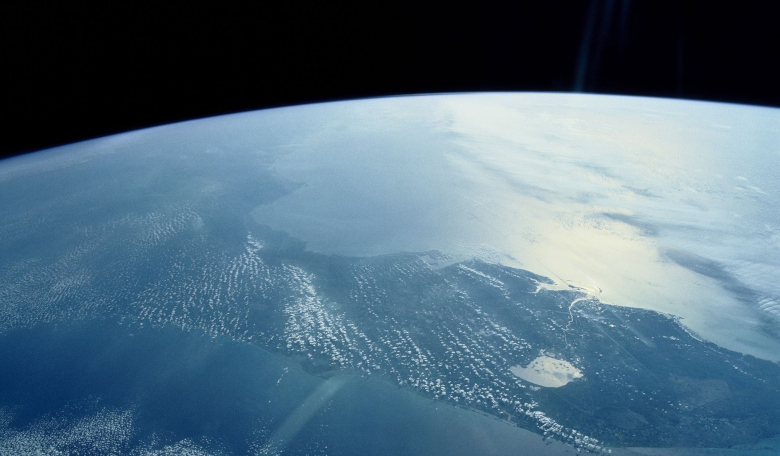Of the thousands of planets discovered so far, Earth is the only one known to have liquid water on its surface and how it got that water is a matter of much debate. But now a new study on hydrogen found in a special type of meteorite suggests that Earth's water may have come from materials that were present in the inner solar system at the time the planet formed, meaning that Earth may have always been wet from the beginning.
According to models of Solar System evolution, because Earth formed in a region where temperatures were too high for water to condense and clump together with other solids, our planet should be dry.
Clearly this is not the case, so to account for this disparity, it has been suggested that icy comets or asteroids which originated in the outer Solar System delivered the vast amounts of water engulfing our planet during a period of bombardment early in Earth’s history.
The theory of a dry Earth is even backed up by studies of a type of meteorite that is composed of material from the inner solar system.
These meteorites are known as enstatite chondrite and on Earth they constitute roughly two percent of known meteorites in collections, making them quite rare.
Because they are essentially composed of the same rocky stuff that makes up Earth, enstatite chondrites are of keen interest to scientists, but so far the amount of water present in these special space rocks has never been accurately estimated.
Until now. To constrain the uncertainties surrounding the origin of Earth's water, researchers from the Centre de Recherches Petrographiques et Geochimiques (CRPG, CNRS/Universite de Lorraine) in Nancy, France, measured the hydrogen content, deuterium/hydrogen (D/H) ratio and nitrogen isotope compositions in thirteen enstatite chondrite meteorites.
"Only a few pristine enstatite chondrites exist: ones that were not altered on their asteroid nor on Earth," said lead author Laurette Piani, a researcher at CPRG. "In our study we have carefully selected the enstatite chondrite meteorites and applied a special analytical procedure to avoid being biased by the input of terrestrial water."
Their results show that the rocks contain sufficient hydrogen to deliver at least three times the amount of water contained in the Earth's oceans, and probably much more.
"Our discovery shows that the Earth's building blocks might have significantly contributed to the Earth's water," Piani says. "Hydrogen-bearing material was present in the inner Solar System at the time of the rocky planet formation, even though the temperatures were too high for water to condense."
Only eleven of the enstatite chondrites were considered to have their original water content and Piani offered an explanation as to why these rare rocks have never been studied in such detail before.
“It was commonly assumed that these chondrites formed close to the sun," she said. "Enstatite chondrites were thus commonly considered 'dry,' and this frequently reasserted assumption has probably prevented any exhaustive analyses to be done for hydrogen."
Not all of the water was sequestered from material in the inner Solar System though, report the team in their paper published last week in Science.
95 percent of water from the enstatite chondrites is consistent with the isotopic composition of water in the oceans, but 5 percent of it appears to delivered by comets or water-rich asteroids, meaning Earth obtained the overwhelming majority of its water from its primary building blocks.
"If enstatite chondrites were effectively the building blocks of our planet – as strongly suggested by their similar isotopic compositions – this result implies that these types of chondrites supplied enough water to Earth to explain the origin of Earth's water,” says co-athor Lionel Vacher, a postdoctoral researcher in physics in Arts & Sciences at Washington University in St. Louis. “Which is amazing!"











